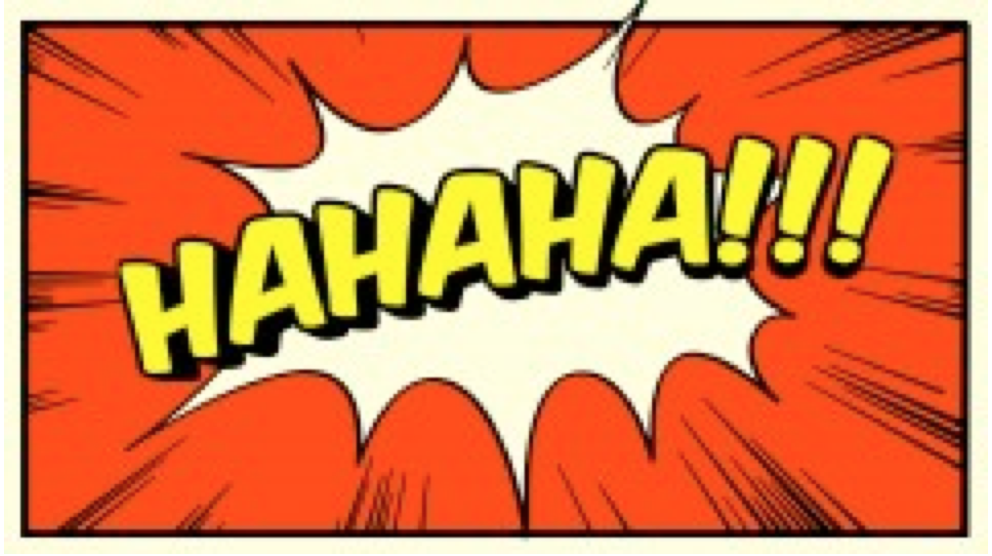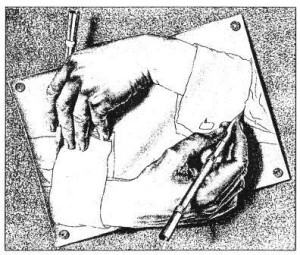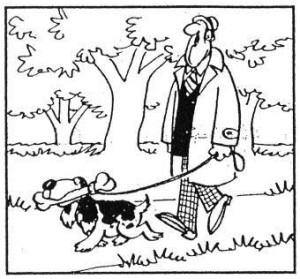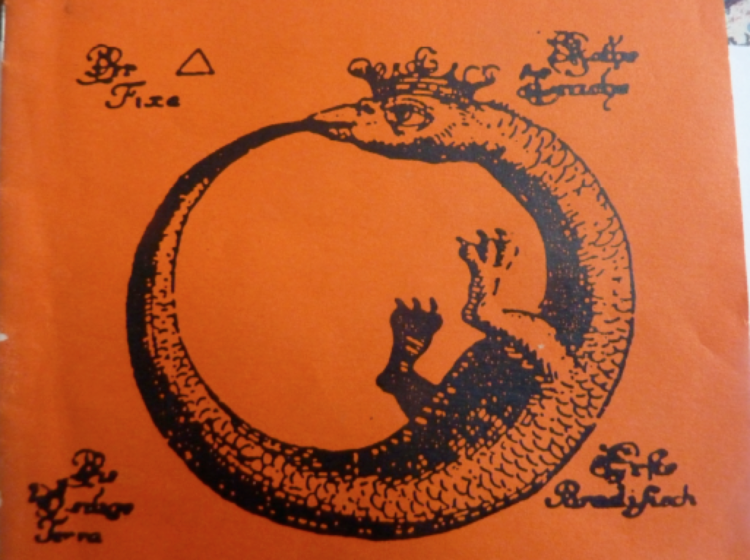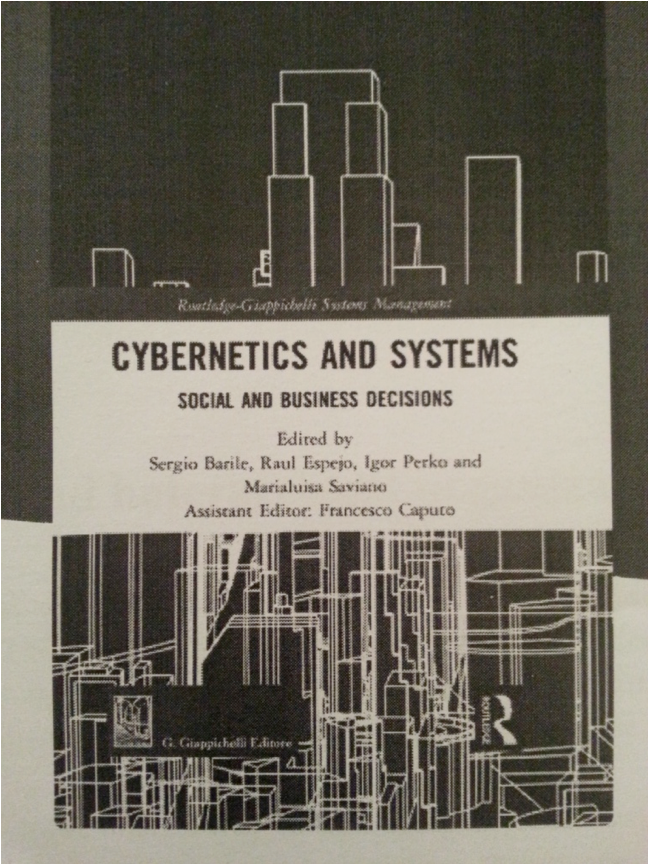Humor is a unique topic of study since there are so many aspects. By definition it is transdisciplinary covering various fields of knowledge, including philosophy, psychology, sociology and linguistics. We will start by attempting to give an initial operative definition: in an inter-subjective encounter, in relationships or in dialogue with others (including imaginary dialogue), we suddenly come across the unplanned or the unexpected: what is strange, unusual or incongruent. This sudden “flash” is humor, even though, obviously, not everything incongruous makes us laugh. So, we can define humor as a sudden contradiction that emerges (even if the humorist was searching for it) like a spiteful imp who overturns the way we look at things. Humor and knowledge are thus closely related: we can in fact erect elegant constructions with great effort and deconstruct their foundations with a simple joke.
An oversight of Freud’s: “sceptical jokes”
In Jokes and Their Relation To The Unconscious (1905), Freud proposes a key for the interpretation of primarily “energetic” humour, based on pleasure and “libidinal discharge”. Freud is interested in the classification of different linguistic techniques that allow that discharge, suggesting some subclasses: (1) the obscene or denuding joke; (2) the aggressive (hostile) joke; (3) the cynical (critical or blasphemic) joke, to which we should add; (4) “sceptical jokes” which take into account the observer and how s/he acknowledges a situation.
Freud describes sceptical jokes with a simple funny story: “Two Jews meet on a train in a station in Galicia. ‘Where are you going?’ asks the first. ‘To Krakow,’ replies the other. ‘Look at what a liar he is,’ mutters the first. ‘If you say you’re going to Krakow, that means you want me to think you’re going to Leopoli. But I know you’re going to Krakow. So why lie?’” (1905, pp. 139-140).
Today, we would call the story a paradox, but it is another aspect that interests us. For Freud “the more serious substance of this joke is however the problem of the criteria of truth. The joke once again makes us feel the existence of a problem and exploits the uncertainty of one of our most common concepts. Is there perhaps truth when we describe things as they are and are not concerned about how the person listening to us understands our words? Or is this only a Jesuitical truth, while the real true consists instead in taking the person listening into account, offering him a faithful picture of what we know? I consider jokes of this kind sufficiently different from the others to give them a special place. They do not attack a person or an institution, but the certainty of our very knowledge, one of our speculative assets. The correct denomination would therefore be sceptical jokes”. (Ibid.)
Freud seems to give a great deal of importance to sceptical jokes and to the problem of “intersubjective truth” yet later in the book, every trace of this is lost. It is true that Freud writes almost as if he were thinking, developing his lines of thought each time, but his reflection ignores the problem of intersubjective truth—immediately after he calls it fundamental—without ever referring to it again.
I would like to return the problem of intersubjective truth, of those paradoxes that “assault the certainty of our knowledge” to the center of our reflection on humor. So I will start with this oversight of Freud’s to see where it leads us. But first, I would like to describe the relational aspects of communication.
The relational scenario of humor
In his book “The Sociological Problem of Laughter” (1928), Eugene Dupréel— sociologist and student of Henrì Bergson—, identifies a “laughter of inclusion” and one of “exclusion” as the basic aspects of human society. Dupréel describes the genealogy of “laughter of inclusion” starting from the smile and maternal effusion, the first recognition of this reciprocal tie. It is an essential process, the first “cell” of every other social relationship, the first positive experience from which the individual will develop his personality, self-esteem and the joy of living. It is a social, joyous laughter that allows subjects to recognize each other and gives them a specific role in the intersubjective scenario.
Along with acceptance, we can also observe exclusion. The laughter of exclusion protects the group and defines the “other” (individual, group, band), connoting and labelling him. At the same time, every inclusion also sanctions an exclusion with the resulting denigration of the adversary and the explosion of an “evil”, a “bad” laugh. Thus, Dupréel was the first author to note the creation of the relational scenario that lies behind laughter.
The systemic/relational point of view suggests that every communication draws new borders, marks wwhere belonging lies and defines new identities. While for Freud, the problem of humor is to discharge excess energy with laughter, Dupréel decribes the intersubjective component of laughter. This aspect, together with knowledge (and its failure) of “sceptical jokes”, defines the basic characteristics we need to understand laughter and humor.
Studies on attachment and observation (including triadic) of newborns and their systems—with the parallel between mother/child interaction and clinical interaction of adults—are an invitation to take a closer look at the relational scenario and consider clinical interaction as a new system based on a complex process of reciprocal self/hetero regulation. It is a system of mutual influence and exchange from which a process much more complex than simple inclusion and exclusion of an individual subject can be derived. Every new communication thus traces a confirmation or interruption of dialogue and group interaction. Thanks to the neuroscientific studies that underline the role of non-verbal processes, knowledge can no longer be inflected in the singular. Instead, it shows tacit, emotive aspects which are contextual and relational.
A family, a group or a couple, like that of therapist and patient, form a new system that puts together a story, some tacit processes and a set of emotions. The transformation of these elements is therapy.
Humor and knowledge
The systemic/constructivist point of view—widespread today in systemic approaches and dynamic and cognitive therapies—defines mental contents (including those of the individual) as depending on a close network of social interaction and the tacit and linguistic exchange in a variety of contexts. That way, themes such as identify, change and representation can only be understood in the light of onging recursive process like those described by Escher:
We must therefore study humor itself with respect to the social construction of knowledge, be it linguistic, tacit, declarative or emotive. We will start with linguistic definitions.
The linguistic definition, as a first step to knowledge, or the simple naming of an object, is based on the possibility of combining different aspects to define a frame or sense. In the chaos of perception, we therefore select some characteristics of the object in question, which acquires meaning only if placed in a framework that, at the same time, separates it and links it to other elements. Indeed, it connects it to elements of the same cluster, and it separates it from other groups or concepts. But we have to know that these definitions are fluid, temporary lines. The epistemologist has Gregory Bateson has stated that “there are premises about ourselves which we use to understand something. But, in the interaction between ourselves that this something else, events may lead us to revise the premises. Then, we suddenly see the new thing in a new light. He went on to say that he suspected that it is this type of things that leads to paradox and to much humor” (1972, pp.52).
The linguistic definition is therefore an act of knowledge, but also the starting point of humor. If we stop to think for a moment, we note that many jokes are nothing more than aphorisms or definitions: “Jealousy is barking dogs that attract thieves”, said Karl Kraus, or as Ennio Flaiano reminds us, “Today’s cretins are specialized”.
We can find numerous examples in the collection of jokes on Carabinieri police reports: “The corpse shows signs of being deceased”, and “the night time din had reached such as intensity that it could be described as nocturnal”, “drug trafficking took place night and day in the neighbourhood, but always in the light of day” and, after a stakeout following a large theft of cattle: “fearing a sudden raid, we entered the cattle shed and found seven dairy cows… including one bull”
The “dairy bull” is category of humor by definition, a creature of dreams, highly symmetric as the Chilean psychoanalyst Igancio Matte Blanco would say. But it is also “undecidable” and a paradox for Aristotlean logic. And so, from the very beginning of knowledge, humor undermines the certainty of our rational convictions, showing vicious circles and paradoxes, other possible categories—tacit, muscular, emotive—as well as Aristotelian and linguistic.
The paradox is a figure and a typical trend, of humor. Take, for example, one of the best known cases: “Eprimenides, of ancient Crete, said that all Cretans were liars” This is a form of paradox because it shows a linguistic form that reveals the very limits of language.
Paradox and humor are not oddities or pathologies of language. Instead, they emerge continuous in knowledge and show the impossibility of isolating a fragment from a more complex picture and define it as if it were a thing unto itself. Mangling Nietzsche, we could say, “there is only one self-organizing network in relationships”.
That way, we learn not only thanks to linguistic definitions, but concrete, relational aspects, internalizing the sequences of tacit exchange. Thanks to the work of Licthenberg, Lachmann and Fossaghe (1996), we can say that we also know through “model scenes”—standardized relational methods that act as (unconscious) models for new relations. So, if knowledge is also based on tacit memorization of sequences, then humor is born of the possibility of confusing the “normal” sequences, especially those taken for granted. Here are some examples:
As Ennio Flaiano stated, “If the snake bites before being charmed, the charmer is useless” or “Years ago, my mother gave me a bullet. I put it in my breast pocket. Two years after that, I was walking down the street when a berserk evangelist heaved a Gideon Bible out a hotel-room window, hitting me in the chest. Bible would’ve gone through my heart if it wasn’t for the bullet”. (Woody Allen)
This is the aspect that most interests me in therapy. Psychotherapy is—from this point of view—the creation of a system that, through communication (putting in common) of actions, images, metaphors and narration, creates a “culture of the couple”. This can update the basic assumptions of the relationship itself, like the “Baron of Munchasusen” who pulled himself out of the quicksand where he was trapped with only the strength of his arms. Therapy therefore tends to be ironic, because it has no other goals than to deny its own basic assumptions. From this point of view, therapy is a conarration, a joint construction of interactive patterns, metaphors and stories that must by necessity co-evolve without ever proposing definitive knowledge (like the Freudian “where the Id was, the Ego must come”).
Humor and trauma
Synthetically, we can say that trauma is a form of falsification. And if humor constitutes a sudden event that subverts what we know and what we take for granted, trauma, instead, disorganizes the subject, the Self, the implicit strategies, the hypotheses of meaning and the subject’s basic metaphors.
Everything that “attacks” the Self is a trauma, and traumas disorganize the Self. What is questioned is the nuclear coherence between action, representation and the experience of a subject or a group.
Trauma is a frightening journey in a world that imposes its rules. Abraham Kardiner stated that “trauma creates conditions in which the organism cannot adapt” because it questions the unity of individual/context. For Sàndor Ferenczi “we are faced with an event that is presented but not represented, an eternal subjective present without past or future”.
Trauma is also a form of procedural failure on the part of the subject. In this area, “Michael Lewis conducted an interesting experiment with two-month old infants. Every baby had a cord on its wrist. The string was connected to a monitor. The babies learned that, by moving their arms, some thing could happen on the screen. Later, the cords were disconnected from the video circuit so that when the infants moved their arms, they couldn’t make the expected changes in their environment. After this failure, the infants behaved as if they were angry or depressed. They either banged their arms in frustration or dropped them, in disappointment” (Russel Meares 1990). But if their arm movements became effective again, and the faces of, for example, the mother or the child itself, appeared, they started laughing again.
If trauma describes a journey in an incumbent world, humor reveals a complex world to be discovered. Humor thus demonstrates a family similarity to trauma because it underlines a deconstruction, an “s-knowledge” that updates the categories of how the field is interpreted, and helps to combine and play with them in new ways.
Where humor is playful and constructive however, trauma is harsh and disorganizing, meaning the failure of every adaptive strategy. The possibility of laughing about something is already a way of adapting, the digestion of a traumatic event.
Humor and therapy
Synthetically I would like to show you an example of humor born during therapy. Aside from being an excellent analyst, the therapist is also a profession sax player, as his patient—also a musician but at the beginning of his career—very well knew. After some difficulty, the young man managed to buy a sax and asked his analyst to inaugurate it, i.e. to play the first note. He “offered” to the analyst the instrument. The two of them were living a moment of impasse that the therapist solved with a wisecrack, saying that “ius primae notae” had been abolished. The two of them laughed and the young man put away his sax.
This episode is an excellent description of the use of humor in therapy. First, I would like to underline thet moment of impasse that the couple experienced. The patient carried out a concrete action and asked his analyist to take part. The therapist’s joke overcame the relational impasse, revealing a more complex scenario: a series of possible meanings underlying the patient’s request.
From my point of view, humor shows us how the mind “works” on different levels of reality. Let’s make some hypothes: if the analyst had refused to play the sax—in the name of neutrality—the young man might have been disappointed and only perceived the therapist’s uwillingness to participate.
If the therapist had instead played the sax, the young man would have felt inferior and would have either started to idolize his talented therapist or be angry at himself or the analyst for the unfair comparison.
The joke “worked” as a metaphor. It used an ancient feudal law and two different (asymmetric) roles, that of the lord (a nobleman) and that of the vassal, a serf. But this relational context is evoked only to say that it is no longer in fashion and that the law— which also puts blowing into the sax at the level of a sexual act—is no longer valid, at least between the two of them.
In a flash, analyst’s joke eliminated the problem of refusal and (stiff) neutrality, revealing to both of them a complex metaphoric scene related to the analytical relationship at hand. It opened up various meaning, multiple possible descriptions without actually carrying out the roles described. The roles evoked became potential narrations and not concrete positions that questioned the relationship.
If I were to suggest to those listening how to use humor during a session, I would say that the therapist should use it as an instrument and try to avoid seeking it voluntarily. Humor is very useful in moments of impasse (that can become “agreed affective moments” for the couple). It is precious if we avoid “laughter of exclusion” and at the same time demonstrate possible scenarios and different descriptions aside from those “in action”.
I would like to recall the concept of the “unconscious plan” of Weis and Sampson from the San Francisco Psychotherapy Group, also used by cognitive colleagues.
These are the subject’s usual mechanisms for giving value to the present scene. They are the premises, the organizing principles that color the context experienced with challenge, confrontation or threat. At this point, even the joke must be “pro plan”. In other words, it must promote an episode that can falsify the patient’s “unconscious plan” and complexify his/her “relational nucleus” to act as a “transformative emotional experience”. In essence, humor co-determines an episode that can expand the system’s relational and conversational possibilities.
That way, humor can bring out a new relational scenario, and help an “avoiding” subject (who defines him/herself with contexts based on distance and idealization) feel the closeness of the therapist. It can also encourage affective sharing for a “narcissist”, creating exceptions in a system capable of updating the meta-rules.
Humor can thus be a precious ally since it forces the subject to feel different meanings and helps narrate and participate in the bipersonal field in new ways. It also helps describe the story and events of that special meeting which is therapy in other ways.
Bibliography:
- BATESON G. (1972), Steps to ecology of mind. Chandler Publishing Company, San Francisco-Scranton-London-Toronto;
- BROMBERG P. (1998-2001), Standing in the spaces. The Analytic press, Inc.;
- CASADIO L. (2006a), Idee per una teoria relazionale delle emozioni. Terapia Familiare, N.81, Luglio 2006, pp.67-88;
- CASADIO L. (2006b), L’umorismo. Il lato comico della conoscenza. FrancoAngeli, Milano;
- DUPRÉEL E. (1928), Le Problème sociologique du rire. Hendmade not pulished;
- FREUD S. (1905), Der Witz. Il motto di spirito e la sua relazione con l’inconscio. Bollati Boringhieri, Torino;
- LICHTENBERG J., LACHMANN F., FOSSAGHE J. (1996), The Clinical Exange. The Analytic Press, Inc;
- MEARES R. (2000), Intimacy and alienation. Published by Brunner-Routledge;

